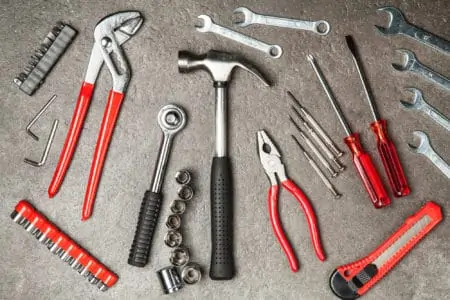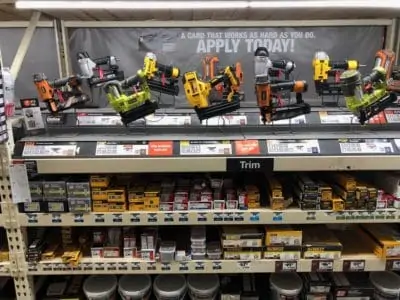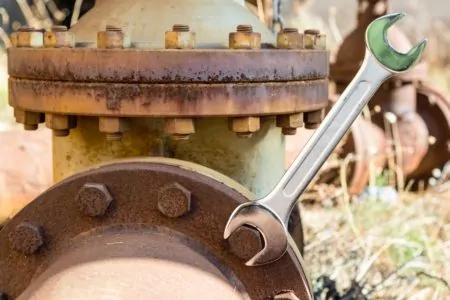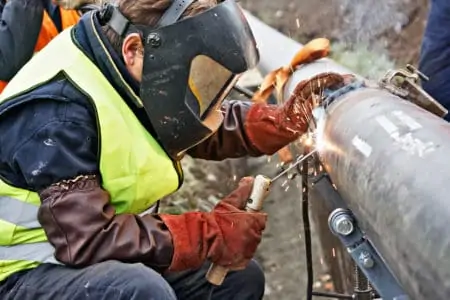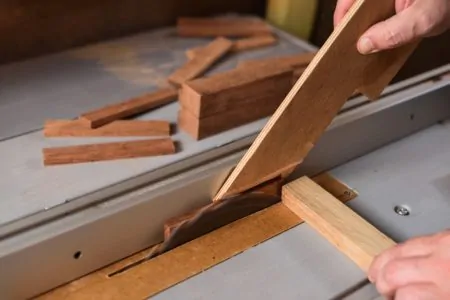If a job is worth doing, it’s worth doing right. And having quality hand tools is essential. These tools are the workhorse of your garage or workshop. They are trustworthy, reliable, and always at hand.
Speak to any mechanic, woodworker, or metalworker, and they will name their favorite hand tools. And within that list, you will find particular names that crop up time and again.
So, what are the best hand tool brands, and do they deserve the love they get?
Key Takeaways
- Top hand tool brands include Proto, Craftsman, Milwaukee, Mac Tools, Klein Tools, Stanley, Harbor Freight Tools, Tekton, SK Hand Tools, and Channellock.
- Each brand has a specific tool they excel at making, such as Stanley’s lockable tape measures or Klein’s telecommunications tools.
- Personal preference, price, and manufacturing location play significant roles in choosing the best hand tool brand for your needs.
- Some consumers prefer American-made tools, driving companies like Klein to invest in US-based manufacturing facilities.
The Top 10 Best Hand Tool Brands
Let’s run through the best hand tool brands, rating them on pedigree, history, tool range, and which tools are the most popular. Finally, we will look at what innovations and technological advancements each brand is famous for.
Proto
When it comes to heritage, Proto is right up there with the best. Proto tools helped to build the Golden Gate Bridge and Apollo 11, and pedigree doesn’t come much better than that. Even the ‘34 Ford was constructed using Proto hand tools.
Their history stretches back over 100 years to 1907, when Alphonse Plomb, Jacob Weninger, and Charles Williams formed the Plomb Tool Company, operating out of a small blacksmiths shop in Los Angeles.
Their big break came when they invented the combination wrench, which is still one of their most popular tools. Building on their success, Plomb acquired a number of companies, including Cragin Tools of Chicago and J.P. Danielson of New York.
After a legal challenge in 1946 over Trademark infringement, the company rebranded as Proto. By 1964, the company was purchased by Ingersoll Rand, and later in 1984, it fell under the Stanley Tools banner.
In recent years, the company has switched its focus to industrial machinery rather than hand tools. Many Proto fans will be familiar with their “Big Dawg” ratchet and their adjustable wrench.
Product Specs
| Country of Origin | USA |
| Years in the Industry | 1907 to present (114years) |
| Tier | Professional, homeowner, industrial |
| Most Popular Hand Tool | Combination wrench |
| Warranty | Limited lifetime |
| Price | $$$ |
Craftsman
In 1927, the head of the hardware department at Sears, Arthur Burrows, was looking to expand the company’s tool range and liked the name Craftsman. He approached the Marion-Craftsman Tool Company and purchased the rights to use the name for $500.
The product line was geared towards the agricultural sector, but his successor decided to upgrade the tool range by making them more suitable for the general consumer. This coincided with America moving into the automobile age.
Interestingly, Sears has never manufactured a single hand tool, instead, they use various manufacturers under a license agreement. For this reason, many Craftsman tools are identical to other tools, like Stanley, Western Forge, and New Britain. The only difference is the name.
As the Sears brand fluctuated in popularity, so did Craftsman tools. Another issue was the quality. Because of the way Sears licensed their products, sometimes the finished tools were not as well made.
For decades, Craftsman tools have been available through the Sears catalogs and in-store, plus at their sister stores Kmart. Stanley Black and Decker bought the brand for a reported $900 million in 2017, but Sears retained the rights to produce and sell Craftsman tools for another 15 years.
Their staple products include ratchets, wrenches, and pliers, but the company makes almost every tool and power tool you can think of.
Today, Craftsman is an instantly recognizable brand, loved across the country by hobbyists and professionals alike. Their tools are versatile, affordable, and of good quality.
Product Specs
| Country of Origin | USA |
| Years in the Industry | 1927 to present (94years) |
| Tier | Professional, homeowner |
| Most Popular Hand Tool | Wrench, ratchet |
| Warranty | Limited lifetime |
| Price | $$ |
Milwaukee
Although Milwaukee can trace its official start back to 1924, the company predates this by a number of years. In 1918 A.H. Peterson was asked by Henry Ford to improve the electric drills used in the manufacture of his cars. He was successful and launched his own company.
Peterson joined forces with Albert F. Siebert, creating the A.H.Peterson Tool Company, but production ceased in 1923 after a fire destroyed their manufacturing facility.
The company folded, and its remaining assets were put up for public auction in 1924. Siebert bought the company and formed the Milwaukee Tool Company, with the aim of repairing and maintaining machinery and tools.
As the brand grew, so did their move into manufacturing rather than repairs and maintenance.
By the 1930s, Milwaukee was making tools to meet the specifications of the US navy, and so when the second world war broke out, Milwaukee saw a boom in sales as manufacturing skyrocketed.
Over its history, the company has innovated at every step of the way. They introduced the first interchangeable hammer and rotary drill so that the user can switch between the two settings. This proved to be extremely popular.
They also added a clutch to their sanding and grinding tools to reduce the recoil, and in 1951 they invented their iconic Sawzall, with a reciprocating blade as a portable hacksaw. And it’s the company’s move into power hand tools that it is best known for today.
The future is in battery power, and again, Milwaukee is leading the way.
Product Specs
| Country of Origin | USA |
| Years in the Industry | 1924 to present (97 years) |
| Tier | Professional, homeowner |
| Most Popular Hand Tool | Sawzall |
| Warranty | 5 years |
| Price | $$$$ |
Mac Tools
Mac Tools started life in 1938, so compared to some, it is a relative latecomer to the party. It was formed by 7 men with the sole aim to make the best tools in the world. The Mechanics Tool and Forge Company had its manufacturing base in Ohio after the men scraped together $5,000 to secure a facility with used machinery.
Like Milwaukee, the war was their real success story, growing rapidly as America’s war machine increased its appetite for machinery and manufacturing. They won a massive government contract in 1942, and in 1944 they recapitalized with the help of the Securities Commission.
Around this time, Clem Poole suggested that the company should venture into socket sets, and rather than expanding their existing line; they opened an associate company called The Clinton Tool Company.
They operated from the same facility as The Mechanics Tool and Forge Company, producing their extensive lines of socket sets. By 1963, the long and not very catchy name was dropped, and the company became Mac Tools.
The product line was enormous, with over 42,000 products delivered by direct sales in the same manner that made the company so successful back in 1938, using delivery vans. Today, the firm concentrates on about 8,000 lines.
They specialize in automotive tools like socket sets and autosport tools but have also branched into storage, multimeters, and diagnostics, as well as power tools.
Product Specs
| Country of Origin | USA |
| Years in the Industry | 1938 to present (83 years) |
| Tier | Professional, homeowner, auto-industry |
| Most Popular Hand Tool | Socket sets |
| Warranty | Various warranties |
| Price | $$$$ |
Klein Tools
Klein can trace its roots all the way back to 1857 when German immigrant Mathias Klein started supplying the telegraph linesman with side-cutting pliers. These tools became so popular that they are still referred to as “Kleins.”
As the telecommunication industry grew, so did Klein’s range of pliers, topping 100 varieties by 1910. By the 60s, the company expanded its range to include leather and canvas products, occupational safety equipment, and hex wrenches.
By the mid-80s, Klein had acquired 2 companies and started manufacturing adjustable wrenches instead of buying them in from Japan.
Today, Klein’s range contains some 3,800 products, with over 165 types of pliers. Telecommunications specialists rely on Klein’s quality and innovations just as much as they did in 1857.
One of the other things that set Klein apart from the competition is its commitment to keeping a manufacturing base in the USA. The company owns plants in Texas and Kansas and has invested heavily in increasing capacity and updating its factories in the last 10 years. That said, many of their hand tools are still manufactured in China.
Klein is also a rarity in that they haven’t been absorbed into a multinational conglomerate like Stanley Black and Decker. The Klein family is still in control of the company, with direct descendants of Mathias Klein taking a keen interest in the day-to-day business.
When it says “Made in the USA,” you can believe it’s true if it’s a Klein tool.
Product Specs
| Country of Origin | USA |
| Years in the Industry | 1857 to present (164 years) |
| Tier | Professional, telecommunications |
| Most Popular Hand Tool | Insulated tools and pliers |
| Warranty | 1-year |
| Price | $$$$ |
Stanley
Now we come to the granddaddy of them all. Stanley Tools has been in existence for 178 years! Way back in 1843, Frederick Stanley founded the Stanley Works in New Britain, Connecticut.
By 1854, they were manufacturing boxwood rules, and just a few years later, they moved into producing levels. The company expanded into producing screwdrivers, hand tools, and hammers.
The iconic steel tape measure was introduced to the world in 1931, closely followed by their famous utility knife with the retractable blade. By 1963, Stanley had the largest handtool manufacturing facility in the world. It was only logical that Stanley would move into laser measurers in 2015, given their pedigree.
Stanley has been part of the Black and Decker empire since 2010, but they continue to innovate and strive to keep the nation’s toolboxes full of quality hand tools.
They make every hand tool imaginable, from drills, hammers, screwdrivers, and so much more. Still, Stanley will forever be known as the company that introduced the locking tape measure, which has been a mainstay of every toolbox since 1963.
Product Specs
| Country of Origin | USA |
| Years in the Industry | 1843 to present (178 years) |
| Tier | Professional, homeowner, auto industry |
| Most Popular Hand Tool | Utility knife, locking tape measure |
| Warranty | Limited lifetime |
| Price | $$ |
Harbor Freight Tools
Harbor Freight is a relative newcomer to the hand tool parade. They started out as a family-run business in 1977, and the brand quickly established itself as a manufacturer of affordable, quality hand tools.
They are a story of rapid expansion, as they opened their first modest tool center in 1980, and by 2005, they had established 250 stores nationwide. Fast forward to 2021, and that number has leaped to over 1,000.
Throughout their expansion, Harbor Freight remains dedicated to bringing the largest selection of tools to the widest possible audience at the most affordable prices.
Their tool brand includes socket sets, hammers, screwdrivers, and pliers, plus many more.
Product Specs
| Country of Origin | USA |
| Years in the Industry | 1977 to present (44 years) |
| Tier | Professional, homeowner |
| Most Popular Hand Tool | Hammers, socket wrenches, magnetic screwdrivers |
| Warranty | Not stated |
| Price | $ |
Tekton
Tekton is another new kid on the block. The company was established in 1991 in Grand Rapids, Michigan, with a focus on assembly and mechanical tools.
While the company is American, the same cannot be said for its manufacturing base. 85 percent of their products are made in China or Taiwan. Only a small proportion of their products are produced in America. With a strong emphasis on American-made, this might not sit well with some consumers.
However, the upside is you get quality tools at an affordable price, bringing tool ownership to the masses. They specialize in socket wrenches, ratchets, pliers, hammers, and any other hand tool you can think of.
Product Specs
| Country of Origin | USA |
| Years in the Industry | 1991 to present (30 years) |
| Tier | Professional, homeowner |
| Most Popular Hand Tool | Hammers, socket wrenches, ratchets |
| Warranty | Lifetime |
| Price | $$ |
SK Hand Tools
SK Hand tools, or Sherman-Klove Hand Tools, was founded in the early 20th century to supply munitions during world war I. Mason H. Sherman and Noah Grover Klove manufactured mortar housings from their facility in Chicago.
During the 1920s, the company acted as a contract manufacturer, making tools for other companies, like Craftsman. They also made socket wrenches for the Hinsdale Socket and Wrench Company, but after it went bust during the great depression, SK Hand tools had a large inventory of their stock.
One of their most popular tools is the round head ratchet. It is as popular today as it ever was and remains largely unchanged from the original design.
As the century progressed and the company grew, so did interest from other manufacturers. Eventually, they were sold to Dresser Industries in 1968 and then again in 1985 to the French tool company Facom Tools.
A management takeover saw them operating once more under the SK Hand Tools banner. The company’s fortunes rose and fell over this period, with them declaring bankruptcy in 2010 before Ideal Industries stepped in with a rescue bid for the company.
Product Specs
| Country of Origin | USA |
| Years in the Industry | Early 20th Century to present (over 100 years) |
| Tier | Professional, homeowner |
| Most Popular Hand Tool | Round Head ratchet |
| Warranty | Lifetime |
| Price | $$$ |
Channellock
George B. DeArment was a blacksmith in Pennsylvania who started his tool-making career by forging tools for farriers. The year was 1886, and the only transport was horse and wagon, so George loaded his cart with his tools and took them from town to town, selling his wares from the back of the wagon.
The business eventually became known as the Champion Bolt and Clipper Company. By 1904, they had moved to a 12,000 square foot manufacturing facility in Meadville, Pennsylvania. They added pinchers and open-end wrenches to its product line, and by 1911, they expanded to making hammers.
By the start of 1933, the company moved to a 33,000 square feet plant, and they changed the name of the company to the Champion-DeArment Tool Company.
The company is most famous for its slip-joint pliers, which are as popular today as they were in 1934 when they were first patented. By the 1960s, the company changed its name to Channellock.
Today, Channellock occupies over 230,000 square feet of manufacturing space and ships to 45 countries, plus they are still owned and run by fourth and fifth-generation DeArment family members.
Product Specs
| Country of Origin | USA |
| Years in the Industry | 1886 to present (over 135 years) |
| Tier | Professional, homeowner |
| Most Popular Hand Tool | Slip-joint pliers |
| Warranty | Not stated |
| Price | $$ |
Which Hand Tool Brand Is the Best?
No single brand is going to provide you with everything you need. Each brand has its go-to tool that they are famous for producing. That’s why you should choose your tools based on which model each particular brand excels at.
Stanley makes the best lockable tape measures. Period. Klein makes the best tools for the telecommunications industry. Period. And Channellock makes the best slip-joint pliers.
Maybe you are swayed by the history or the pedigree, or you just choose the same brand you’ve always used? Perhaps your parents or grandparents always used a particular brand of tool and that loyalty has been passed down?
In truth, it usually comes down to personal preference and price. Why pay more for a certain brand when you can get the same quality tool produced under license for another tool company for a fraction of the cost.
Another factor at play is where the tools are manufactured. Most are made in China or Taiwan, but some companies are acutely aware of the “American-made” selling point. Buying American brands has become something of a badge of loyalty for some.
By rejecting foreign-made products, the consumer is driving the conversation by persuading major American brands to switch production back to these shores. Klein is one example where they have invested heavily in their Texas and Kansas facilities.
Buy the Best
We come back to our original point, which is if you want a job done correctly, you should choose the right tools for the task. And that doesn’t always mean the most expensive. The reason why certain brands are known for specific tools is that they have spent years fine-tuning their craft to bring you the very best.
